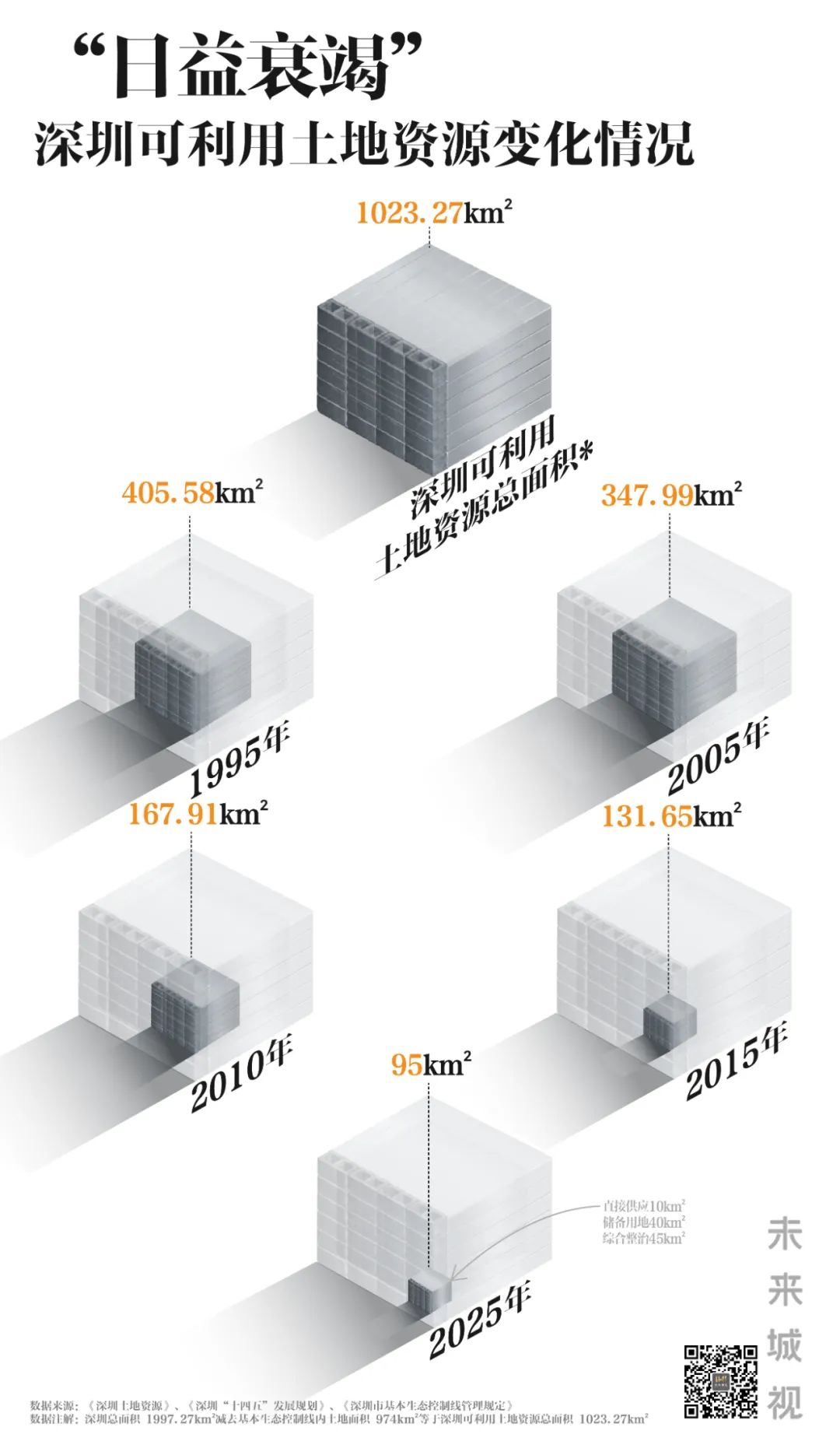Accumulating a population of 20 million, it took 150 years for Shanghai, over 350 years for Beijing, and over 30 years for Shenzhen.

Shenzhen has a total land area of 1997 kilometers ², 960 kilometers of built-up area ², According to the official address database of Shenzhen, in 2019, there were a total of 660000 buildings and over 11 million units of housing in Shenzhen.

The expansion of Shenzhen’s built-up areas is far slower than the speed of population expansion, and even lower than the city’s ability to create wealth.
From east to west, overlook the landscape of Shenzhen architecture.
How did the people and buildings of this city evolve for survival? A city can be seen as a business operating a ‘space’, earning profits by continuously attracting consumers (residents, businesses)—— Zhao Yanjing, an expert in urban planning and professor at Xiamen University, has seen explosive development in Shenzhen.
Even without government “height restrictions”, the market cannot accept such “heights”
.

Shenzhen is also the city with the most newly built skyscrapers in the world.
Cities are getting bigger and land is getting scarce.



Since 2005, Shenzhen has entered a period of surface space depletion, with the first official mention of “unsustainable” land resources in Shenzhen.
1997km ² The narrow strip is crowded with over 20 million Shenzhen people.

Among the four major cities in Beijing, Shanghai, Guangzhou, and Shenzhen, Shenzhen has the smallest area and the largest number of skyscrapers.
Since 2020, the government has issued multiple building height restrictions, and a group of ambitious Shenzhen Sky Challengers have had to adjust the height of floor construction.

Shenzhen above the sea of clouds.
The number of skyscrapers over 200 meters in Shenzhen exceeds the sum of Beijing, Shanghai, and Guangzhou.
Due to the shortage of land resources in Shenzhen, a large number of small property rights houses are still occupied by urban villages.
The picture shows Futian Shangxia Shacheng Village, facing the magnificent urban landscape.

The area of land available for development in Shenzhen is decreasing year by year.
In a shorter period of time, more people have been added, far surpassing the “golden age” of the world’s most famous cities.

Faced with crowded surfaces and unable to withstand the “era of ambition”, Shenzhen people have turned their goals to the sky.
The skyscrapers in Shenzhen are concentrated in the financial center of Futian and the science and technology innovation center of Nanshan.
Meanwhile, in 2005, half of Shenzhen’s area was designated as an ecological line; In 2018, nearly one-third of the built-up areas were designated as industrial land red lines; Land resources are becoming increasingly scarce, and the rapidly increasing population’s demand for housing and public services can be described as “self indulgent”.
Challenge the sky, although architectural technology and commercial desires continue to “empower”.
But whether it is in terms of commercial feasibility, green environmental protection, or the development direction of the entire city, the game of pursuing height has come to an end.






